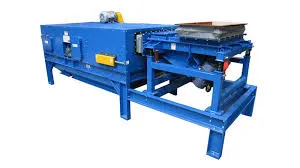

నవం . 08, 2024 13:15 Back to list
The Importance of Steel Scrap Recycling Plants
As global awareness of environmental sustainability increases, steel scrap recycling plants have emerged as pivotal players in the circular economy. These facilities not only contribute to reducing waste but also play a critical role in conserving resources and minimizing the carbon footprint associated with steel production.
Steel is one of the most recycled materials in the world. According to various industry reports, approximately 70% of steel is recycled after its useful life. This high recycling rate is due in part to the unique properties of steel, which allows it to be melted down and reformed without losing its strength or integrity. Steel scrap recycling plants capitalize on this capability by collecting scrap metal from various sources, including construction sites, manufacturing facilities, and automobiles, and processing it for reuse.
The operation of a steel scrap recycling plant involves several key steps. First, scrap metal is collected and sorted into different categories, including stainless steel, carbon steel, and alloy steel. This sorting process is crucial to ensure that the recycled material meets the requirements of steelmakers. Once sorted, the scrap is processed, typically by shredding it into smaller pieces, which makes it easier to handle and melts down.

After shredding, the steel scrap is cleaned to remove any contaminants such as oil, paint, or non-metal materials. This is a critical stage that ensures the purity of the recycled steel, which directly affects the quality of the final product. The cleaned scrap is then fed into a furnace, where it is melted at high temperatures. This molten metal can be cast into new forms, which are then sent to manufacturing plants to produce new products ranging from automobiles to construction materials.
The environmental benefits of steel scrap recycling are substantial. By recycling steel, we can significantly reduce the need for raw materials, such as iron ore and coal. This reduction leads to decreased mining and extraction activities, which can be detrimental to ecosystems. Additionally, recycling steel saves a considerable amount of energy. Producing steel from recycled materials requires up to 75% less energy compared to making it from virgin raw materials. This energy conservation translates into lower greenhouse gas emissions, which is essential in the fight against climate change.
Moreover, steel scrap recycling plants also contribute to job creation and economic development. These facilities require a diverse workforce for operations, including jobs in logistics, sorting, processing, and management. As the demand for recycled steel continues to grow, so too does the need for skilled labor in the recycling industry.
In conclusion, steel scrap recycling plants are vital to promoting a sustainable future. They not only recycle valuable resources but also help reduce pollution, conserve energy, and create jobs. As society moves forward, it is essential to support and invest in these facilities, recognizing their integral role in our economy and the environment. Emphasizing recycling as a primary resource management strategy will ensure that we can meet the demands of the present without compromising the ability of future generations to thrive. By fostering a culture of recycling, we can contribute to a cleaner, greener, and more sustainable world.
Latest news
Troubleshooting Common Eddy Separator Problems
NewsJul.04,2025
The Role of Metal Recycling Plants in Circular Economy
NewsJul.04,2025
The Impact of Recycling Line Pickers on Waste Management Costs
NewsJul.04,2025
Safety Features Every Metal Shredder Should Have
NewsJul.04,2025
How Industrial Shredders Improve Waste Management Systems
NewsJul.04,2025
How Cable Granulators Contribute to Sustainable Recycling
NewsJul.04,2025